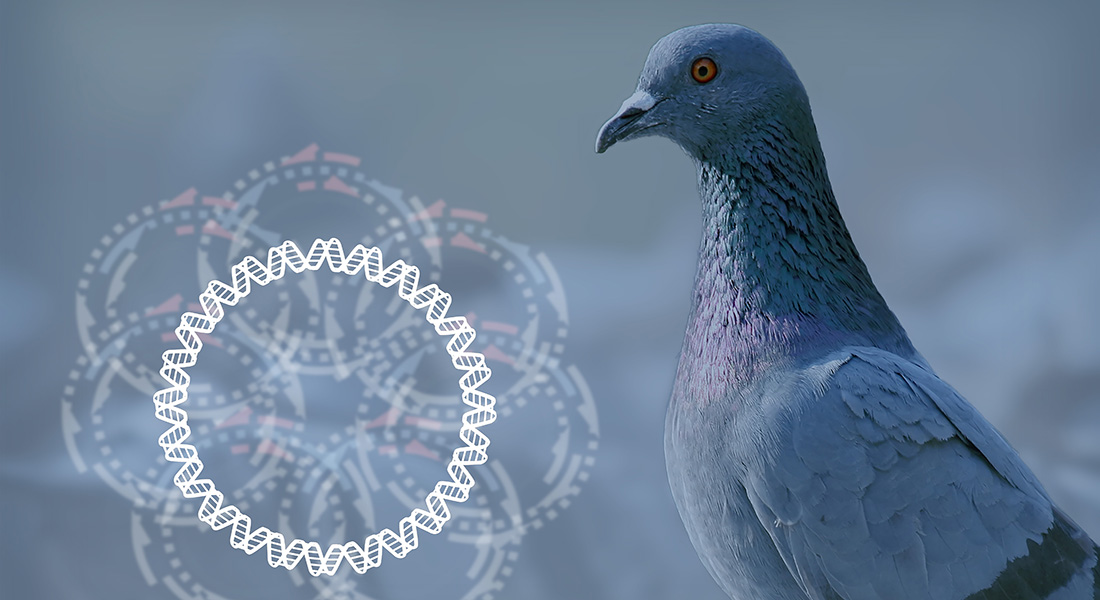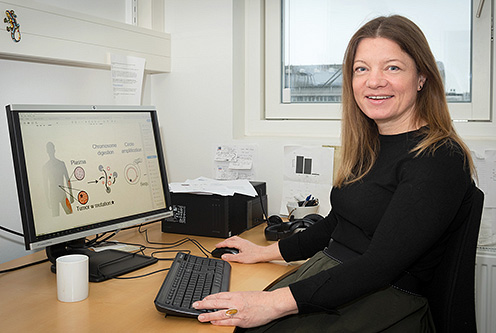Developing circular DNA as a marker for cancer
Coordinator: Julie Boertmann Noer
Funding: Innovation Foundation Denmark
Birgitte Regenberg's research group
Exploring the biology of circular DNA

Our lab carries multidisciplinary projects orbiting around extrachromosomal circular DNA. We use yeast, mice and human cancers as model systems to understand basic principles of circular DNA biology and develop transferable technologies. We are pioneers in methods for isolation and detection of circular DNA as well as bioinformatics tools to untangle sequencing data. Our aim is to shed light into some of the great questions of evolutionary biology such as speciation and cancer.
Our research focuses on genetic mechanisms for cell-cell variation in eukaryotic cells and their impact on diseases and chromosome evolution.
We recently discovered that circular DNA of chromosomal origin is not just a curiosum but is in fact an abundant carrier of genetic information and that DNA circles are produced from all parts of the genome in several eukaryotic species and across several cell types (yeast, bird, human healthy somatic tissue and germline cells).
Genes on circular DNA are expressed in cancer where they contribute to tumorigenesis and drug resistance, and in unicellular yeast where circular DNA can provide a selective advantage. These discoveries solved a longstanding question in genetics concerning deleted DNA – we now know the fate of at least part of the sequence material that is occasionally deleted in both somatic and germline cells.
These discoveries were made possible because of a technological breakthrough after we combined hypersensitive purification of circular DNA with the most advanced DNA sequencing and novel bioinformatics tools. We have also developed targeted DNA circularization tools in yeast and for different human genotypes, which provide the technological basis for a much-needed research model for testing the significance of circular DNA in disease (specifically cancer) and chromosome evolution.
Our research is primarily focused on:
- The use of circular DNA as a marker for somatic mutations in humans and mice (specifically cancers)
- Explaining the factors causing and maintaining circular DNA (humans and yeast)
- Measuring the effects of circular DNA on aging (mice and yeast)
- Chromosomal evolution (yeast and mammals)

PRINCIPAL INVESTIGATOR
Dr. Birgitte Regenberg
Professor, Department of Biology
RESEARCH ASSISTANT
Sefa Alizadeh
POSTDOCTORAL RESEARCHERS
Julie Boertmann Noer
Lasse Bøllehuus Hansen
Sam Keating
Sylvester Holt
Iñigo Prada Luengo
PHD STUDENTS
Gerard Arrey Tané
Yating Qin
Xue Liang
Peng Han
MASTERS STUDENTS
Maria Charlotte Tümmler
Yixin Li
UNDERGRADUATE STUDENTS
Jonathan Smed Karlog
Natascha Emilie Schaleck
Emma Sofie Terkelsen
OTHER ASSISTANTS
Ida Borup Sjøstrøm
Former members of the group
PHD STUDENTS
Henrik Devitt Møller
Kaj Scherz Andersen
MASTERS STUDENTS
Rasmus Henrik Henriksen
Sandra Fugl Jakobsen
Rasmus Torbensen
Laura Gro Rejkjær Sørensen
UNDERGRADUATE STUDENTS
Oliver Knight Møller
Kristian Hanghøj
Camilla Eggert Larsen
Rebecca Sørensen
Nanna Smedengaard
Camila G. Hansen
Anna Reimer Sørensen
Alexander Skodsborg
Niels Lyngkjær
Innovation Foundation Denmark
FET-OPEN Horizon 2020
VILLUM FONDEN
Novo Nordisk Foundation
Danish Council for Independent Research | FNU
Carlsbergfondet
Do you study biochemistry, bioinformatics, biology or biomedicine? Are you interested in genetics of diseases, evolution or genomics? Then one of our projects might be interesting for you. We address the following questions in our projects:
- Which factors are involved in the formation of circular DNA?
- How does circular DNA affect aging?
- Are circular DNAs key drivers in gene amplifications?
- Is transcription important for formation of circular DNA?
- How do we best isolate and map circular DNA?
2020
The curious DNA circles that make treating cancer so hard
Chemical & Engineering News
What is extrachromosomal circular DNA and what does it do?
Clinical Chemistry
2019
Scientists Are Just Beginning to Understand Mysterious DNA Circles Common in Cancer Cells
The New York Times
Epigenetics and exercise
RiffReporter.de
Projects
Contact
Professor
Birgitte Regenberg
Section for Ecology and Evolution
Universitetsparken 13
DK-2100 Copenhagen Ø, Denmark
Email: BRegenberg@bio.ku.dk
Phone: +45 353 21680
